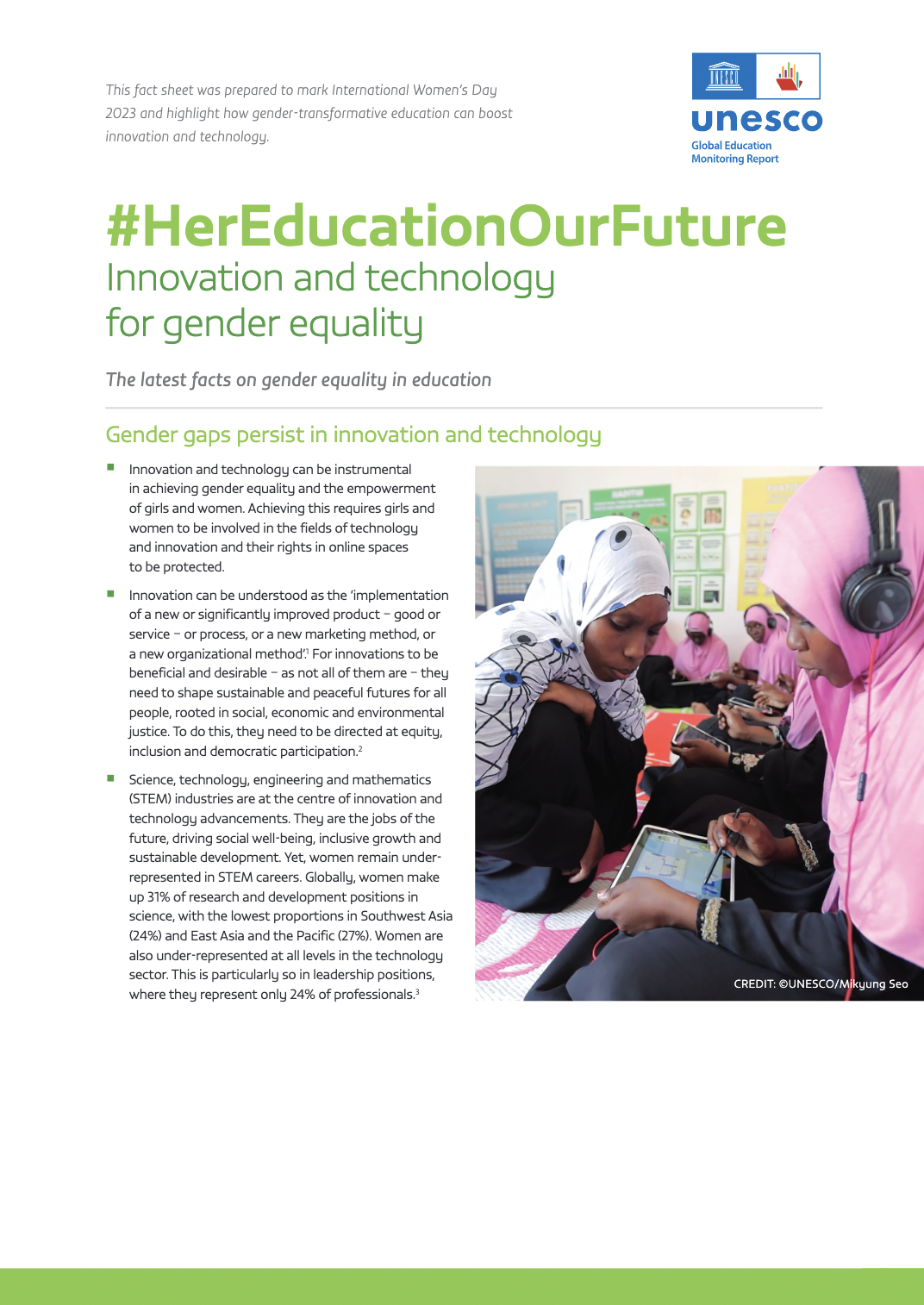Gender gaps persist in innovation and technology
Innovation and technology can be instrumental in achieving gender equality and the empowerment of girls and women. Achieving this requires girls and women to be involved in the fields of technology and innovation and their rights in online spaces to be protected.
Innovation can be understood as the ‘implementation of a new or significantly improved product – good or service – or process, or a new marketing method, or a new organizational method’. For innovations to be beneficial and desirable – as not all of them are – they need to shape sustainable and peaceful futures for all people, rooted in social, economic and environmental justice. To do this, they need to be directed at equity, inclusion and democratic participation.
Science, technology, engineering and mathematics (STEM) industries are at the centre of innovation and technology advancements. They are the jobs of the future, driving social well-being, inclusive growth and sustainable development. Yet, women remain under-represented in STEM careers. Globally, women make up 31% of research and development positions in science, with the lowest proportions in Southwest Asia (24%) and East Asia and the Pacific (27%). Women are also under-represented at all levels in the technology sector. This is particularly so in leadership positions, where they represent only 24% of professionals.
Read the full report on the UNESDOC website.






